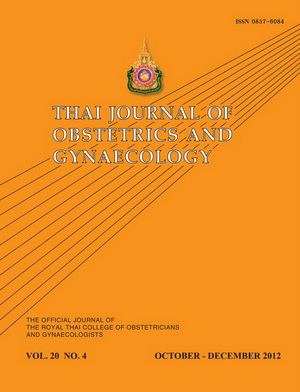Prevalence and Correlation of Margin Status and Residual Disease in Subsequent Hysterectomized Specimens Following Loop Electrosurgical Excision Procedure (LEEP)
Main Article Content
Abstract
Objectives: To evaluate the prevalence of residual disease in the subsequent hysterectomy specimens after loop electrosurgical excision procedure (LEEP) and its correlation with adequacy of margins in the previous specimens.
Materials and Methods: Medical records and pathologic reports of patients who were diagnosed of squamous intraepithelial lesion (low grade squamous intraepithelial lesion: LSIL, high grade squamous intraepithelial lesion: HSIL and carcinoma in situ: CIS) or microinvasive squamous cervical carcinoma (MIC) in the LEEP specimens from November 2010 to July 2012 at Sawanpracharak Hospital, Nakhonsawan Province were reviewed. All patients had subsequent hysterectomy within 6 months after the diagnosis.
Results: The prevalence of residual disease was 66.2%. Among 227 women with positive LEEP margins, 171 (75.3%) had residual disease in subsequent hysterectomy specimens, while 17 (29.8%) of 57 women with negative LEEP margins had residual lesions. There was a significant correlation of margin status and residual disease in the subsequent hysterectomy specimens following LEEP (p<0.0005).
Conclusion: The prevalence of residual disease in the subsequent hysterectomy specimens after LEEP was high. Positive margin in LEEP specimen was the significant predictor of residual disease in hysterectomy specimen.


